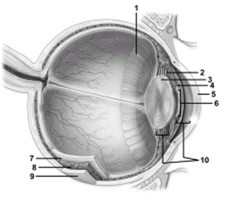Determine the effects on fluid movement and capillary net filtration pressure (NFP) when a liver disorder prevents adequate formation of plasma proteins, such as albumin
What will be an ideal response?
When the liver fails, production of plasma proteins decreases and colloid osmotic pressure decreases. NFP remains positive since hydrostatic pressure is greater than colloid osmotic pressure. Fluids are pushed from the capillary into the interstitial fluid of the abdomen, known as ascites.
You might also like to view...
Explain why the sympathetic division of the ANS has more widespread and longer-lasting effects than the parasympathetic division
What will be an ideal response
Which of the following muscles attaches to the clavicle?
A. Sternohyoid B. Omohyoid C. Geniohyoid D. Digastric
Describe the hormone relaxin
A. Relaxin is produced by the parathyroid glands and triggers the release of calcium from the bones. B. Relaxin is produced by the testes and stimulates secretion of the reproductive glands. C. Relaxin is produced by the adrenal cortex and maintains normal metabolism. D. Relaxin is produced by the ovaries and increases the flexibility of connective tissue.
 In this sagittal view of the eye, what structure does number 3 indicate?
In this sagittal view of the eye, what structure does number 3 indicate?
A. Cornea B. Lens C. Pupil D. Iris E. Ciliary body